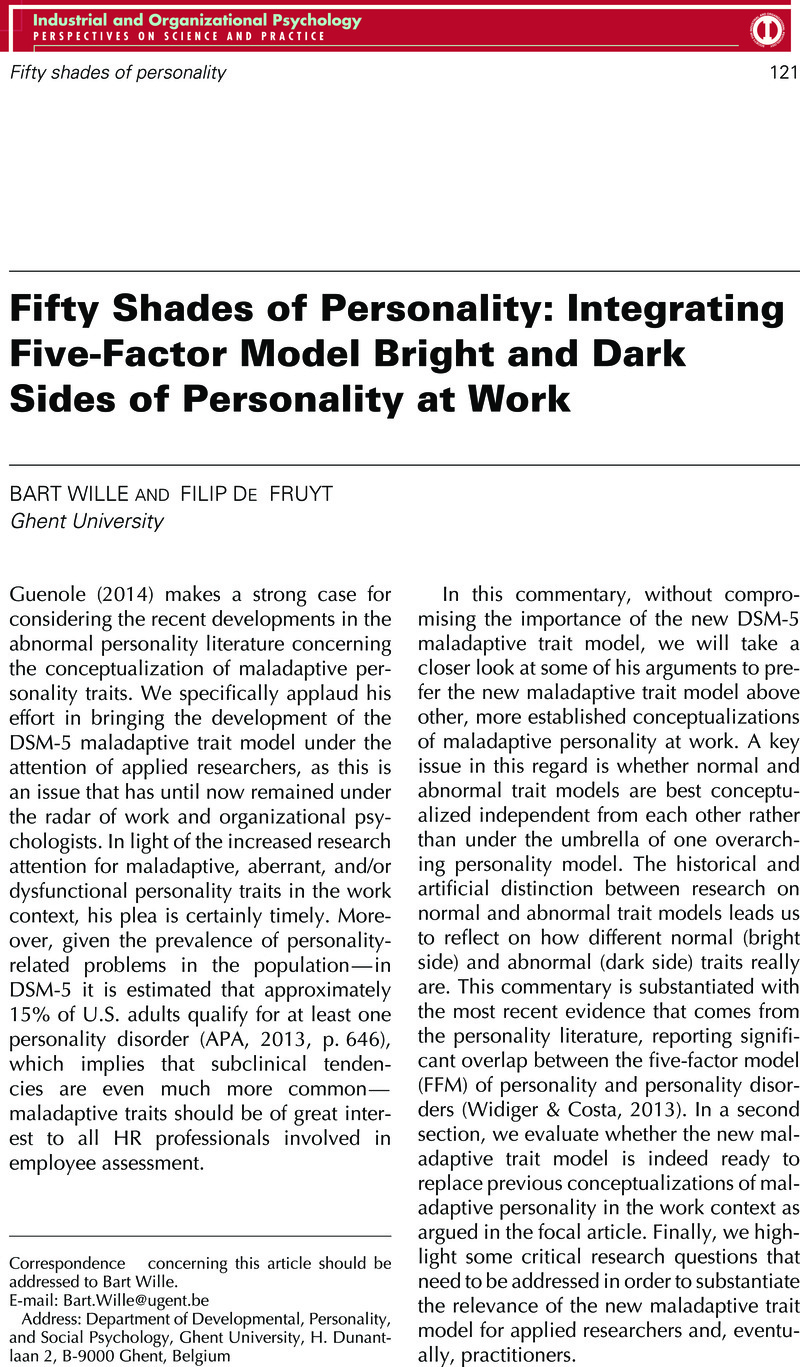Crossref Citations
This article has been cited by the following publications. This list is generated based on data provided by Crossref.
Guenole, Nigel
2015.
The Hierarchical Structure of Work-Related Maladaptive Personality Traits.
European Journal of Psychological Assessment,
Vol. 31,
Issue. 2,
p.
83.
Vergauwe, Jasmine
Wille, Bart
Feys, Marjolein
De Fruyt, Filip
and
Anseel, Frederik
2015.
Fear of Being Exposed: The Trait-Relatedness of the Impostor Phenomenon and its Relevance in the Work Context.
Journal of Business and Psychology,
Vol. 30,
Issue. 3,
p.
565.
Wille, Bart
Heyde, Fien
Vergauwe, Jasmine
and
De Fruyt, Filip
2023.
Understanding dark side personality at work: Distinguishing and reviewing nonlinear, interactive, differential, and reciprocal effects.
International Journal of Selection and Assessment,
Vol. 31,
Issue. 1,
p.
1.



